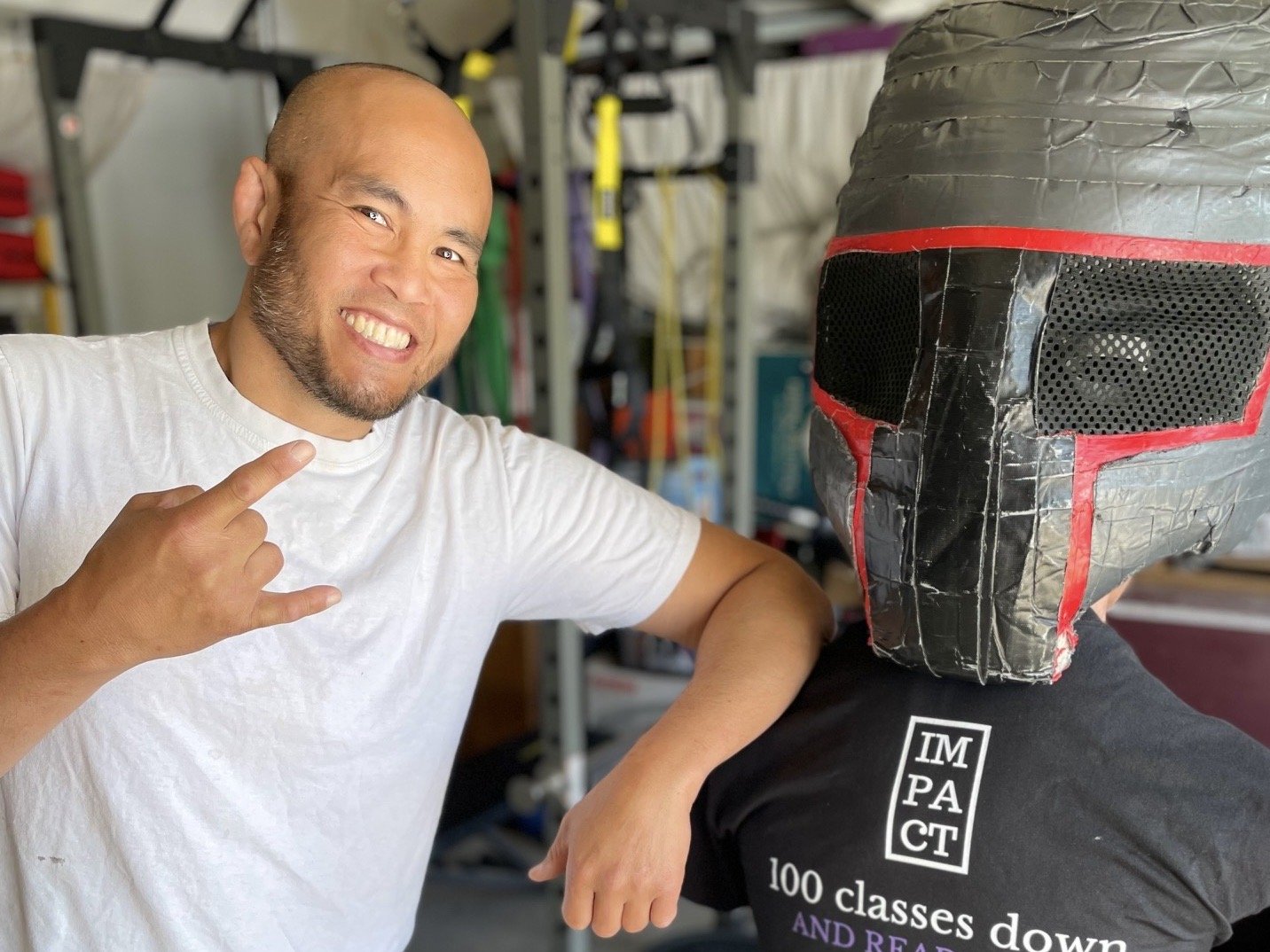Author’s Note: Hello to all those who are taking the time to read this. I’d like to say “thank you” for being a part of the movement known as Empowerment Self Defense. I’m part of the board of the Association of ESD Professionals, as well as a Senior Instructor/Instructor Trainer for Impact Personal Safety Los Angeles and Global.
I was asked to share my experience as the famous “suit” that people in the ESD community have had the opportunity to fight against or have at least seen from videos of training with IMPACT LA/Global.
“So Michael, what’s it like to get beat up for a living?”
In short, it’s nothing less than hard work. Period. I just finished my 100th Basics Class in Los Angeles as lead suited instructor after 23 years. To put it in perspective, this doesn’t count the classes that I’ve been on call as backup, nor does it include any workshops, high school classes, advanced classes, or classes out of state/country. This blog comes at an opportune time of reflection as I hit this milestone on May 1, 2022.
Suited Instructor: Padded or Suited Instructors “wear specially tailored protective gear that keeps them safe while simulating realistic assaults in which students practice simple, effective defensive techniques using full force strikes.” —Impact Personal Safety
When I was a kid and would play “good guys versus bad guys,” I always enjoyed being the good guy who would overcome overwhelming odds to defeat the bad guy. I also found it cathartically fun to be the bad guy, seeing how happy my friends were when they defeated me. I enjoyed giving them that feeling of accomplishment. We weren’t competing. We took turns being good guys and bad guys, and it was all fun, healthy play and bonding.
I didn’t realize how truly fun it might be to “be” a bad guy until I started working with Impact in the summer of 1999 after taking their Men’s Basics class in January of that same year. My close friend and colleague introduced me to Impact at the undergraduate school where we studied, and we both decided to answer the call for people who wanted to don the suit and contribute to the cause.
As well as helping people get in touch with their strength and courage to successfully set boundaries and defend themselves from an attacker, the role of the Padded Instructor looked fun… in a bumper car sort of way.
Once I got fitted for my armor and started my journey, I realized the comparison to being in a bumper car, or a mobile punching bag, was inaccurate. There is a lot more to it than that! Now, 23 years later, I think I can articulate what it’s like for me to be the Padded Instructor who plays the role of the mock assailant.
I think there are three key pieces that contribute to being successful in the suit: physicality, acting ability, and emotionality.
1. Being hit repeatedly is physically taxing.
A person must be in such physical condition as to be able to receive a high volume of strikes at various intensities, as well deal with the constant up and down, grappling, and moving around another human being. For the scenarios to look and feel real, one needs to have a certain level of physical strength, speed, body control and endurance to give the students the best “worst fight” they can manage. The goal is for students to come out successful, knowing that they gave 100% of their physical, emotional, and mental resources to persevere. Developing these attributes of strength, speed, and endurance is relatively easy, and important for a padded instructor to maintain.
2. Acting is a big part of it.
When I don the suit, I act in a variety of ways that portray what it could be like when one person is targeting another to cause harm. A major component is the intention to help the student become better than they were when they first came to class. I always think, “What kind of anxiety-provoking behaviors can I present to this student in this scenario that will make them feel like they’re about to be attacked?” I have to draw from a variety of sources to create characters when creating an improvised scene that can get the right reactions or responses to help the student manage their stress and apply whatever verbal or fighting skills they’ve learned up to that point.
3. Emotionality drives reality.
This piece is a difficult one to articulate, because when I’m acting the role of the assailant, the delivery of emotion has to “feel” believable enough for the student to experience real anxiety and elevated emotionality to learn how to manage that. Even though they are ultimately safe, I have to make them feel as if they could be in danger. I have to talk to them and behave in ways I wouldn’t normally do. And all in a way that pushes them to feel fear in order to overcome the fear.
Bringing together physicality, acting, and emotional reality is hard work! But it’s fun work, too. I get to work with a team of like-minded individuals in designing scenarios to help people become stronger. I have to be my best self in order to give the quality experience that my students deserve. I relate it a lot to professional wrestling. There has to be a realness to the performance once the helmet is donned. The teaching that I and my team provide depends on that sense of reality.
Working as a padded instructor is like reliving my childhood. I enjoy seeing people work towards becoming happier versions of themselves, knowing they were finally able to access a strength they’ve always had, but never got to fully understand.
To teach people how to fight, I act as the bad guy and get beat up accordingly, all in the name of empowering others.

